What happens when a claimant of a region is excluded from a treaty that officially divides it into smaller parts? As history suggests, this person will keep fighting for what they believe is rightfully theirs. The success of that usually depends on how much power and support he or she amasses to win that claim.
18th-century Java witnessed such a struggle where battles, political maneuvers, drama and intrigue were the norm in the relations among the rulers of Surakarta and Yogyakarta, the Dutch East India Company (VOC) and Prince Sambernyawa, a common enemy of the former three. The Treaty of Giyanti, which formalized the breakaway of Yogyakarta from Surakarta, conspicuously omitted Prince Sambernyawa’s demand for a land of his own. His relentless defiance of the Dutch proposal for joining either Surakarta or Yogyakarta resulted in the Treaty of Salatiga two years after the formation of Yogyakarta. The treaty effectively marked the establishment of the Principality of Mangkunegaran which was granted parts of Surakarta and Yogyakarta, effectively putting the wars among Java’s competing royal courts to an end.
Prince Sambernyawa – who took the official title of Mangkunegara I – soon commissioned a palace, located roughly 1 km north of the keraton (royal palace) of Surakarta, from which he would rule his nascent realm. Inspired by the layout of a Javanese keraton, Mangkunegaran Palace consisted of separate buildings erected for specific purposes. Pendopo Ageng (Great Audience Hall) stands at the front of the palace’s core compound, welcoming dignitaries and commoners alike to walk on its reflective marble floors beneath a lofty ceiling. Rows of elegant chandeliers usher people into Dalem Ageng, which was once reserved for the Mangkunegaran court’s newlyweds. Today it houses a collection of weapons, medals, and artistic artifacts owned by the royal court. Behind the chamber are beautiful gardens as well as pavilions adorned with both European and Javanese decorative elements.
In 1944, a new ruler, Mangkunegara VIII, ascended the throne and led his principality through turbulent times. Just a year after his ascension, Indonesia declared independence from the Japanese, and subsequently from the Dutch. However, as the latter pushed back and managed to regain control of parts of Indonesia, the new republic was keen on stripping local rulers across the archipelago of their political powers to make way for a modern governmental structure. Unlike Yogyakarta whose active role in the Indonesian struggle against the Dutch ensured the preservation of the monarchy’s powers within the Republic of Indonesia, Mangkunegaran and Surakarta were merged into Central Java province a year after the Dutch pulled out and officially recognized Indonesia’s independence.
Like Pakubuwono XIII, the current ruler of Surakarta who possesses no real power and acts more as a cultural figure, Mangkunegara IX is still the nominal ruler of his principality, a patron who oversees traditional dances and rituals performed in his palace grounds. This leads to the question I mentioned in the first post of this series on Javanese Royal Palaces: where is the cultural center of Java? In fact, it’s as preposterous as asking who is the most European among the French, the Germans and the Italians. The truth is that Surakarta, Yogyakarta and Mangkunegaran were all once part of one big family called Mataram, the custodian of Javanese culture as well as the advocate of a Javanized version of Islam. Only when the three work together, instead of constantly being consumed by their own intrigues, can the battle to turn the tide against creeping conservatism be won. Whether that day when the successors of the Mataram sultanate unite will come or not, only time will tell.
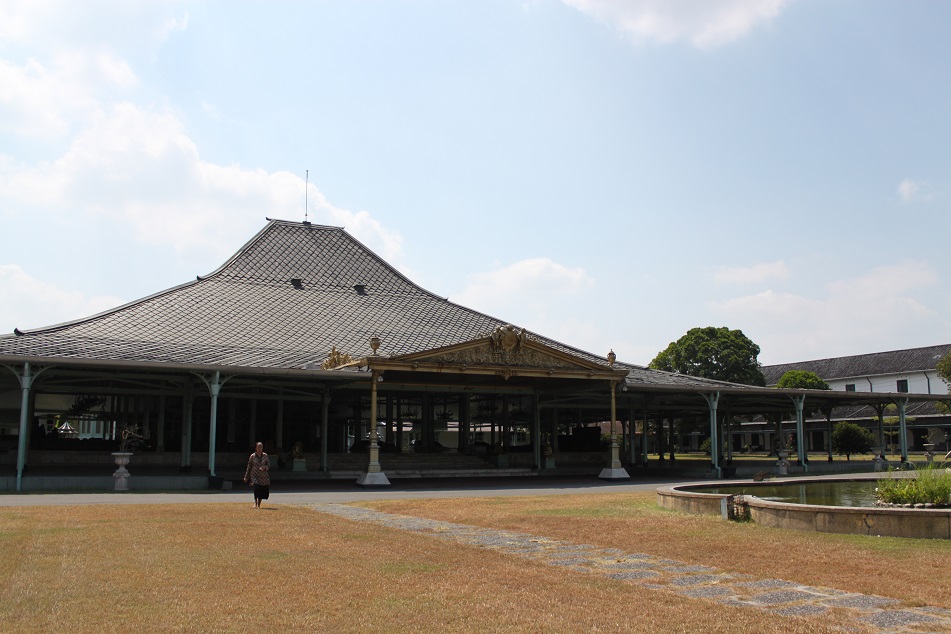





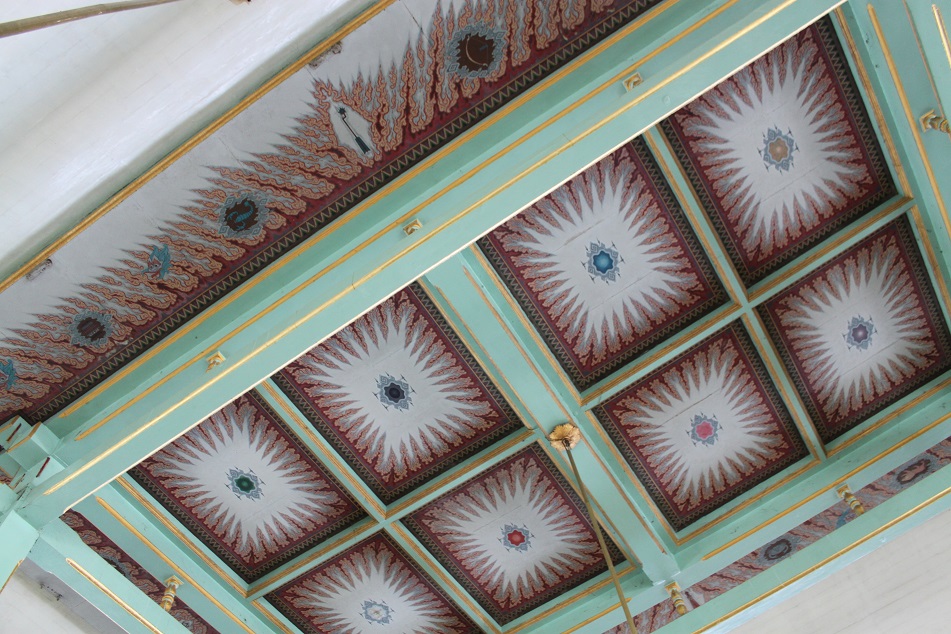




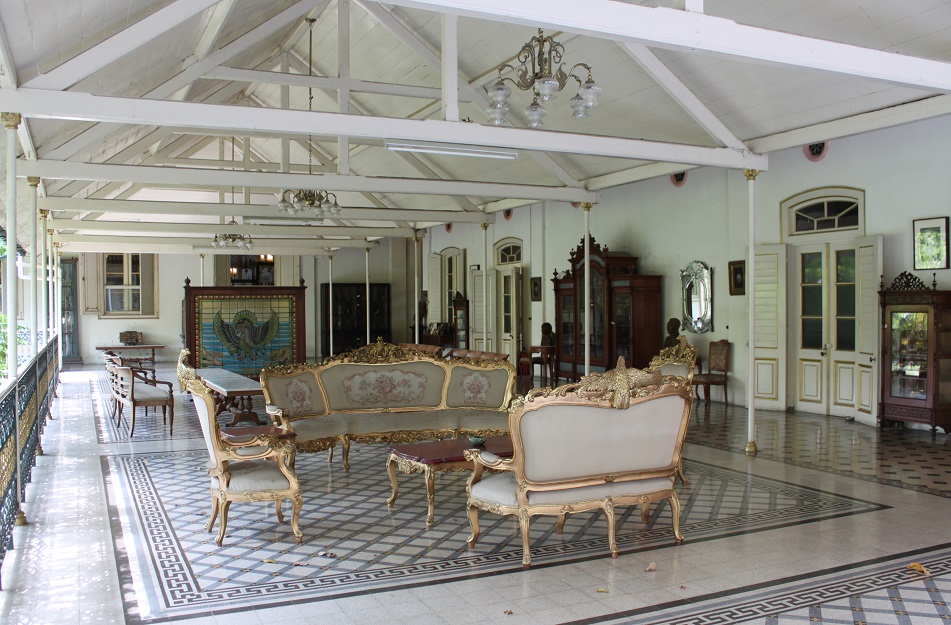
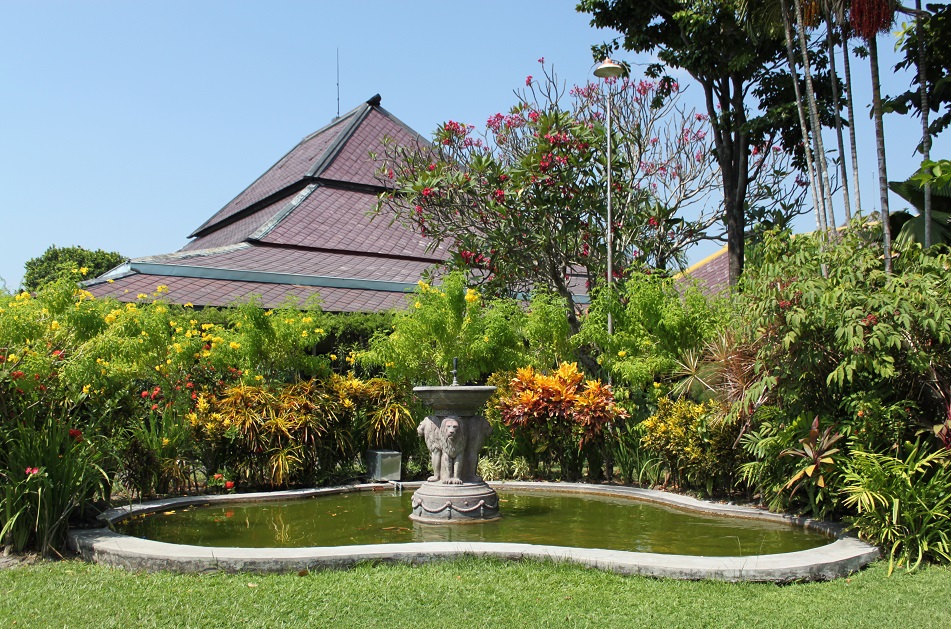




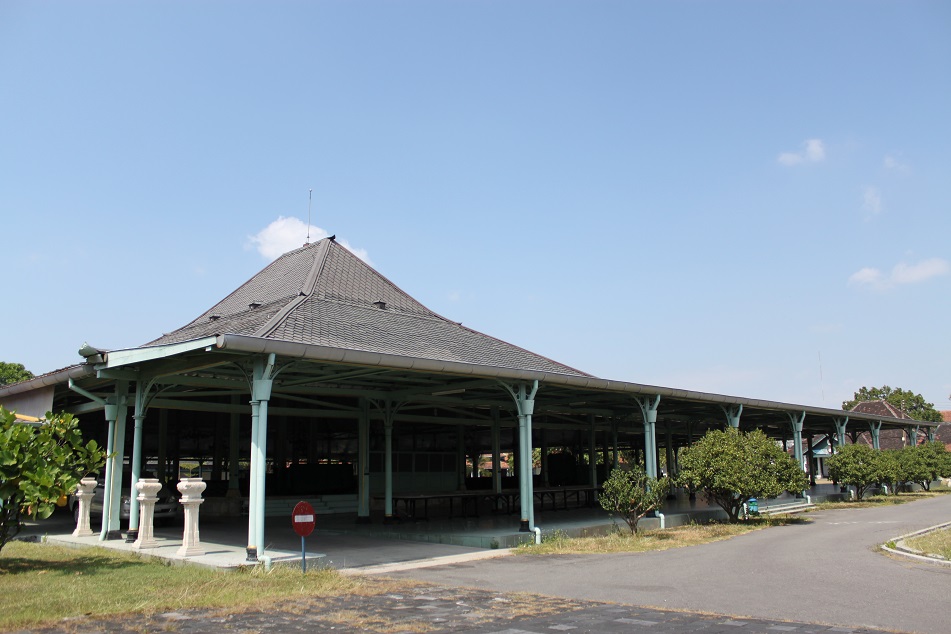

Amazing picures! The palace blends many architectural styles, it seems. Also, the lion fountain of the palace is exactly like the National Emblem of India. I can’t say whether it was inspired from the Ashoka Pillar or it’s just a coincidence.
LikeLike
Thanks Abhinav! You’re right about the different cultural influences at this palace. In fact, you can see this recurring theme of eclecticism at many royal palaces across Indonesia. Whether it was past sultans’ aspirations to elevate their realms’ standing beyond their traditional borders, or their penchant for all those different architectural styles, the real reason behind this amalgamation is something I still need to find out. Good observation on the similarity between that fountain and the pillars of Ashoka!
LikeLike
Your description really wants to make me visit South East Asia NOW!
LikeLike
Well, there are a lot of direct flights from India to Southeast Asia; Garuda Indonesia actually serves the Jakarta – Mumbai and Bali – Mumbai routes. 🙂
LikeLiked by 1 person
The architecture seems to be quite different from other palaces – more open air and inviting. Not as ostentatious as some.
Conservatism is indeed creeping in everywhere, in some places it’s at a greater pace than creeping!
LikeLike
It did feel very welcoming actually, maybe because of the high ceiling of the reception hall.
I don’t know why, but even in the most unthinkable places conservatism seems to be gaining ground. There should be a way to push back this worrying trend.
LikeLike
Wow, what a beautiful place and nice picts.
I’m not visite yet, insya Allah next year I’ll go there! 👌👍
LikeLike
Hopefully that chance will come sooner than you think, so you won’t have to wait for 2019 to go there. 🙂
Thanks for reading!
LikeLike
Ha..ha.., right! 👌👍
LikeLike
Even though Mangkunegaran Palace has always been in the shadow of its more famous counterparts, I was struck at how large and impressive it actually was. I relished the sense of space and soaring, tent-like roof at the Pendopo Ageng; it’s such a shame that the Carrara marble floor was irreversibly damaged and stained by the flood of 1966. The mixture of Javanese and European aesthetics throughout the palace was quite distinctive, and I couldn’t help but smirk when we saw the spiky chastity belt made of gold inside the Dalem Ageng.
LikeLike
I felt the same actually. The Pendopo Ageng was very impressive and it looked just how I imagined a grand palace for Javanese kings should be. I was surprised to hear our guide’s explanation that the palace was flooded, but I was even more surprised to know how marble could change color. Ahh yes, that chastity belt was very fascinating, almost comical really. If only we could take photos!
LikeLiked by 1 person
Love the photos on this one! 🙂
LikeLike
Thanks Melissa! Glad you enjoyed the images.
LikeLiked by 1 person
Love the colors within… the cool mint green with the white, the gold and a little bit of red. And oh those stained glass windows!! Wonderful photos and interesting history.
Peta
LikeLike
The stained glass window, particularly the one with a woman surrounded by men, is my favorite part of the palace; I love how confident and powerful she looks. She could be a queen, a princess, or a singer … I wish I asked that to the palace guide. Thanks for reading, Peta!
LikeLike
Nice pictures and a great depiction. I missed several time to go to this palace when I visited Solo
LikeLike
It’s not that far from keraton Surakarta Hadiningrat, just across a really nice restaurant. Next time you’re in town, make sure to visit Pura Mangkunegaran. Thanks for reading!
LikeLike
Aku dua kali berkunjung ke Istana Mangkunegaran ini. Yang pertama bareng sama anggota keluarga kepangeranan ini, dan yang terakhir sendirian -ditemenin guide sih-. Dan meskipun ukuran istananya gak terlalu besar -dibandingkan Kasultanan Yogyakarta dan Kasunanan Surakarta- tapi koleksi-koleksi yang mereka punya cukup menarik. Yang paling aku ingat adalah ‘badong emas’, alias celana dalam anti selingkuh khusus Pangeran dan Putri atau Raja dan Ratu. Gak kebayang harus pakai begituan jaman dulu. Meskipun dari emas, tetap aja pasti ribet 😀
O iya, kisah kecantikan Gusti Nurul dan menari dengan gamelan dari jarak jauhnya juga adalah hal-hal yang rasanya menjadi sisi-sisi romantis dari istana ini yang bakal selalu menarik untuk diulas.
Btw, aku punya ‘satu kisah menarik’ yang sebaiknya nanti kita bahas japri aja Bam 😀
LikeLike
Wah, seru banget ke sana bareng “orang dalam”. Kamu bisa eksplor tempat-tempat yang gak semua pengunjung bisa eksplor dong, Bart? Setuju mengenai ukuran istana yang tidak terlalu besar dibandingkan dengan keraton Jogja atau Solo, tapi menurutku Pura Mangkunegaran ini terlihat lebih elegan. Mungkin karena Pendopo Agengnya lebih luas dan tinggi dibandingkan dengan yang ada di Jogja atau Solo, jadi kesannya megah. Tapi aku juga suka sama benda-benda dan hiasan di dalam istana ini, termasuk yang paling legendaris ya badong emas itu. Pas dijelasin sama guide-nya itu apa aku ya geli ya kasihan sama raja-raja zaman dulu. Kayaknya gak nyaman deh. 😀
Waah, jadi penasaran soal “kisah menarik” itu! 🙂
LikeLiked by 1 person
Jadi aku sempat diajakkin ke rumah RT atau RW nya gitu, yang ternyata memang khusus anggota keluarga mereka. Trus lihat sanggar tari yang dikelola Mangkunegaran, kalau gak salah sejajaran sama istal kavaleri yang ada di gambar terakhirmu itu.
Sebenarnya aku sempat penasaran sih. Itu istananya yang gak besar, atau memang area kunjungannya yang benar-benar terbatas. Tapi kalau gak salah khan di samping beranda pertemuan oktagonal itu adalah kaputren ya?
LikeLike
Wah, jadi penasaran pengen balik lagi ke sana. Pengennya sih pas ada pentas tari, jadi semakin terasa suasana Jawa-nya. Naah, aku agak-agak lupa deh di sebelah bangunan oktagonal itu apa, dan waktu itu seingetku guide-nya cuma ngajak ke beberapa area dan ruangan aja.
LikeLiked by 1 person
Kalau gak salah di lapangan depan gerbang istananya itu sering dipakai festival-festival setiap tahunnya. Dan dulu juga pementasan sendratari Matah Ati juga diadakan di lapangan itu.
LikeLike
Nah Matah Ati aku inget pernah dipentasin di sana, soalnya dulu temen kantorku ada yang pergi ke Solo buat nonton. Kalo dipikir-pikir sekarang kenapa dulu aku gak ikutan nonton aja ya, padahal sepertinya aku bakal suka.
LikeLiked by 1 person
Iya aku juga. Temenku malah ada yang nonton dua kali saking sukanya. Yang di Esplanade Singapore, sama pas digelar ulang di Mangkunegaran. Sayangnya aku gak bisa datang semua, soalnya pas lagi di laut 😦
Kalau sendratari Ramayana yang di Prambanan udah pernah nonton Bam?
LikeLike
Semoga suatu hari nanti bakal ada pementasan Matah Ati lagi. Yang sendratari Ramayana di Prambanan aku belum pernah nonton juga nih. Kemarin pas outing kantor sempet direncanakan, tapi berhubung lagi musim hujan jadinya rencananya berubah.
LikeLiked by 1 person
Aamiin ,,, soalnya memang pertunjukkan satu itu secara konten dan penataannya memang keren. Liat cuplikannya di youtube aja merinding.
LikeLiked by 1 person
I must admit that all these unfamiliar names and leaders and kingdoms start to blur in my head sometimes, but I do always love plucking a few interesting facts out and adding them to my (admittedly small) knowledge of your part of the world. I also always enjoy seeing the different architecture, and this palace is no exception, especially because it seems so different – much simpler in many ways, isn’t it? And I’m a big fan of that blue-green paint color!
LikeLike
I got the same feeling when I read the US edition of NatGeo many years ago; there were names I was unfamiliar with, like Sacagawea, but slowly as I read more and more about the US history those names began to stick in my mind. So I can understand how you feel when you read my posts on places across Indonesia that are rarely reported beyond the nation’s borders.
Javanese royal palaces are a lot smaller in size than their counterparts in Europe. However as a Javanese myself I can attest to the culture of expressing things in a refined and refrained manner as quintessentially Javanese, a reason some might claim as to why those keraton were built in such scale — although the real reason was probably money.
LikeLiked by 1 person
That stained glass! So beautiful!
LikeLike
Seems like I’m not the only one who loves that stained glass!
LikeLiked by 1 person
nice…
LikeLike
Thanks for dropping by, Asyraf!
LikeLiked by 1 person
of course, nice post
LikeLike
Nice photos, Bama 👍
Ternyata keren banget ya istana Mangkunegaran ini, bangunannya terawat dengan baik.
Perlu kujadikan bucklist sewaktu ke Surakarta/Solo lagi nanti.
LikeLike
Thank you, Himawan.
Iya menurut saya Pura Mangkunegaran ini paling megah di antara kediaman raja-raja di Jawa. Semoga bisa berkunjung ke sana di lain kesempatan ya.
LikeLike
Amazing palace. 🙂
LikeLike
Although it’s not as expansive as the other palace in Solo, this one is definitely my favorite.
LikeLiked by 1 person